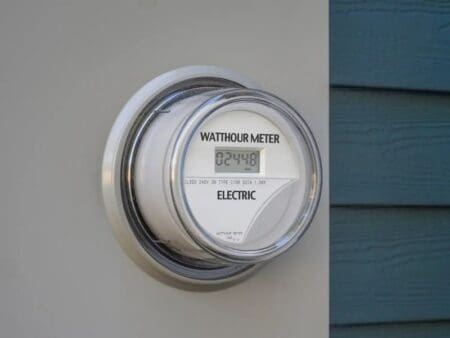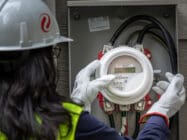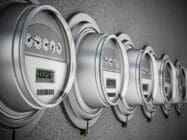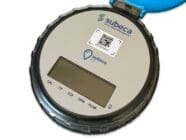
According to Berg Insight analysis, smart meter penetration in Latin America will more than triple from 11.7 million units end of last year to 38.4 million by 2028.
This is according to a new research report from IoT analyst firm Berg Insight – Smart metering in Latin America – which reveals that the penetration of smart electricity meters in Latin America – a region including Argentina, Brazil, Chile, Colombia, Peru, Uruguay, Costa Rica, Mexico and Panama – reached 6.2% in 2022.
According to the report, the installed base will grow at 21.7% CAGR from 2022 to 2028 to reach a total of 38.4 million, up by 26.7 million over the course of 6 years.
Brazil is the market leader
Over the course of Berg Insight’s forecast period, smart meter penetration in Brazil – the region’s largest market for tech – will increase from 5.7% last year to 21.5% in 2028. Brazil and Mexico will account for close to 80% of total smart meter shipments.
“The number of meter installations in Latin America will continue to grow in the coming years and will be driven by the expansion of ongoing smart metering projects and new major projects. Besides the major markets Brazil and Mexico, countries like Colombia and Peru will grow their share of annual shipment volumes from around 4% in 2022 to over 16% by 2028,” states Mattias Carlsson, IoT analyst at Berg Insight.
Carlsson adds how examples such as Colombia and Peru demonstrate the immense potential for a Latin smart meter market; the former will see annual shipments decuple, and the latter will increase sixteenfold.
Have you read:
Inside Serbia’s smart metering project
Norway’s smart meter rollout pronounced complete
According to the research, annual shipment volumes in Colombia will grow at an impressive 48.5%, while the market in neighbouring Peru is more nascent; smart meter shipment volumes are anticipated to increase after 2024, when the country is set to propose technical standards and cost-benefit methodology for future Advanced Metering Infrastructure (AMI) deployments. The installed base of smart meters in Peru is forecasted to grow from around 50,000 in 2022 to 650,000 by 2028.
According to the study, annual shipments across the region will grow from 1.9 million units in 2022 to over 6.1 million in 2028. This, they state, makes Latin America one of the fastest growing smart metering markets worldwide.
Smart metering in Latin America
The annual demand for electricity meters in Latin America, states the research report, ranges from 16 to 27 million units, out of which Brazil and Mexico together account for over 70%.
In Brazil specifically, several utilities such as Cemig, Copel and Enel have been increasing investments in AMI infrastructure, particularly Enel which has announced an aim of 100% smart meter coverage across all its subsidiaries worldwide by 2030.
Utilities in the country are increasingly investing in the technology and the country is forecast to account for close to 60% of the shipped smart electricity meters in Latin America during the forecast period.
Berg Insight adds how, except for Costa Rica and Uruguay, Latin America has not yet seen a wave of massive smart metering projects. However, a number of utilities in the region are scaling up their smart metering initiatives and in some cases also prepare for large-scale rollouts in the near future.
Overall, high energy losses due to the prevalence of energy theft throughout Latin America will continue to be a major driver for smart metering investments, states the report. The use cases in Latin America to date include remote meter reading, fault detection, distribution automation and measuring power quality.
Additionally, the report finds that Chinese meter vendors in recent years have achieved increasing success in the Latin American market. A key contributing factor is their ability to offer competitive pricing, a crucial aspect for price-sensitive utilities operating in the region.
Also of interest:
How does IoT work for smart metering?
Smart meters and data enablers of the energy transition – Landis+Gyr CEO
By country
According to the report, the smart electricity meter rollout in Costa Rica progresses steadily and the country reached a milestone last year when smart meter penetration rate surpassed 50%; the country’s largest DSO, Group ICE, has also stated an aim of 100% smart meter coverage by 2035.
In Uruguay, nationwide rollout by the state-owned utility UTE is largely completed and the country is expected to become the first Latin American country to reach full smart metering coverage in 2024.
Smart electricity meters in Mexico is forecasted to increase from 8% in 2022 to over 18% in 2028.
Argentina’s high inflation and “bleak economic outlook”, Berg Insight adds, make any large-scale smart meter deployment unlikely in the near future, unless the economic situation significantly improves.
Smart metering deployments in Chile peaked in 2018–2019 but have since decreased mainly due to regulatory ambiguity. However, the report states there is yet potential for a more positive market development should the regulatory environment improve.
Panama was the smallest market covered in the report and was found to have the lowest smart meter penetration rate. The country’s installed base is forecast to reach 113,000 by 2028, although there is potential for significantly higher growth if the government improves the regulatory framework and creates incentives for smart meter deployments.
“As Latin America is poised for significant growth in the coming years, the race has begun between the top meter vendors to gain market share in the region. To date, Chinese smart meter vendors have achieved significant success in Latin America,” added Carlsson.
“One key contributing factor is their ability to offer competitive pricing, a crucial aspect for the price-sensitive utilities operating in the region.”








